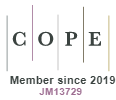Urban Ecosystems: Preservation and Management of Urban Water Bodies
DOI:
https://doi.org/10.15415/cs.2013.11002Keywords:
Urban Ecosystems, Preservation and Management, Water BodiesAbstract
The sensitivity of our fore fathers towards the environment and its resources never made us feel the agony of water scarcity. They understood the value of water and tapped it through artificial water sources, which became sources of survival even when our cities were not located near any natural water body. However, as the cities developed and grew into larger metropolises, land value grew and land invariably became an asset. The first casualties of such widespread evelopment were the urban water bodies that got converted into cesspools of urban sewage, mosquito-breeding areas and slowly degraded. Incessant land filling of these water bodies, which once were pristine waters sustaining life gave more land to build upon. The following paper studies and elaborates the methodology adopted by the development agencies to restore and conserve these urban wetlands and water bodies under the technical guidance of experts from national / international organizations.Three case studies from the city of Hyderabad, India are discussed with a focus on understanding the present status of lakes and physical condition of their surroundings, strategies for fund mobilization, types of local involvement and community participation, ways of continuous monitoring and maintenance, etc. thereby creating a self-sustainable and integrated management plan.
Downloads
References
Barstad, W. and D. Karasov (1987). Lake development: How much is too much? MN Dept. Nat. Resour., Div.Waters.
Botkin, D.B., Beveridge, C.E., 1997. Citites as Environments. Urban Ecosystems 1, 3-19.http://dx.doi.org/10.1023/A:1014354923367
Carlson, R.E. (1984). The trophic state concept: a lake management perspective. In: Lake and Reservoir Management. Proc. Internat. Symp. North American Lakes Management Society, Knoxville, TN, Oct 18-20, 1983.
Ewel, K.C., 1997. Water quality improvement by wetlands. In: Daily, G.C. (Ed.), Natures Services, Societal Dependence on Natural Ecosystems, Island Press, Washington, DC, pp. 329-344.
Gren, I.M., 1995. Costs and benefits of restoring wetlands. Two Swedish case studies. Ecol. Eng. 4, 153-162. http://dx.doi.org/10.1016/0925-8574(94)00043-5
Lerner, D., 1990. Groundwater recharge in urban areas. In: Massing, H., Packman, J., Zuidema, F.C. (Eds.), Hydrological Process and Water Management in Urban Area, pp. 59-65 IAHS publ. no. 198, 1990.
World Bank (1993). Water Resources Management - Policy Paper, Washington, DC: World Bank.
Yufan, S., Tieheng, S., Ping, G., Zhijun, C., 1994. Resourceful ecological treatment of wastewater in urban ecosystems. J. Environ. Sci. 6 (4), 487-495.
Downloads
Published
Issue
Section
License
Articles in the Journal of Creative Space (Creat. Sp.) by Chitkara University Publications are Open Access articles that are published with licensed under a Creative Commons Attribution- CC-BY 4.0 International License. Based on a work at https://cs.chitkara.edu.in. This license permits one to use, remix, tweak and reproduction in any medium, even commercially provided one give credit for the original creation.
View Legal Code of the above-mentioned license, https://creativecommons.org/licenses/by/4.0/legalcode
View Licence Deed here https://creativecommons.org/licenses/by/4.0/
 |
Journal of Creative Space by Chitkara University Publications is licensed under a Creative Commons Attribution 4.0 International License. Based on a work at https://cs.chitkara.edu.in/ |







